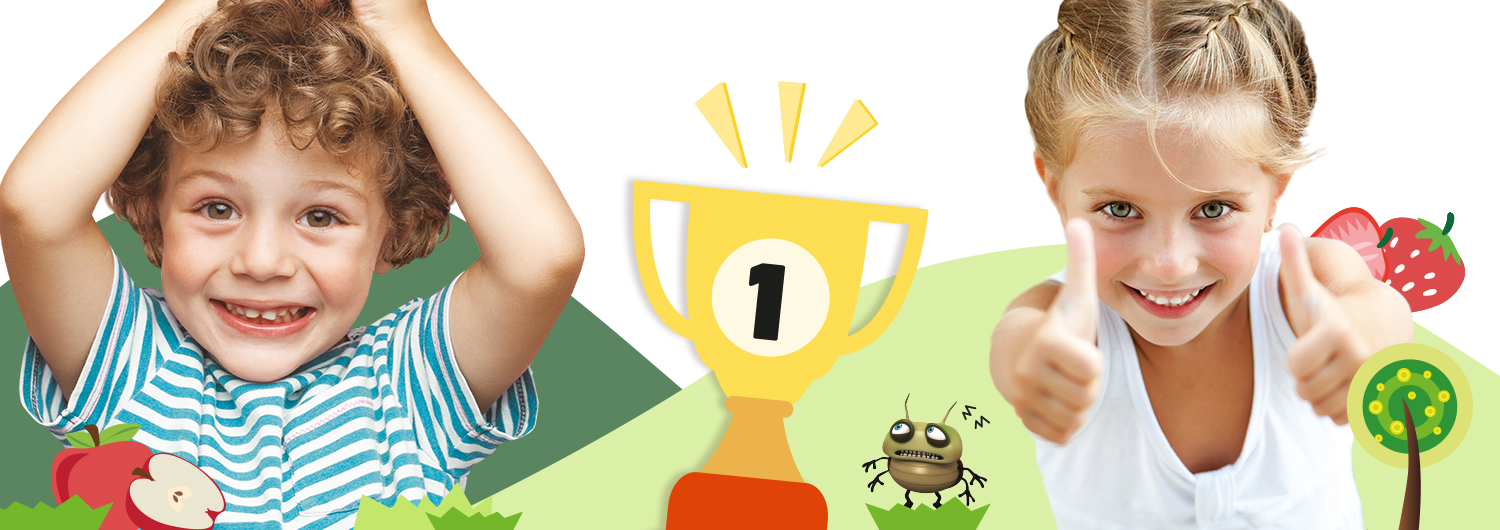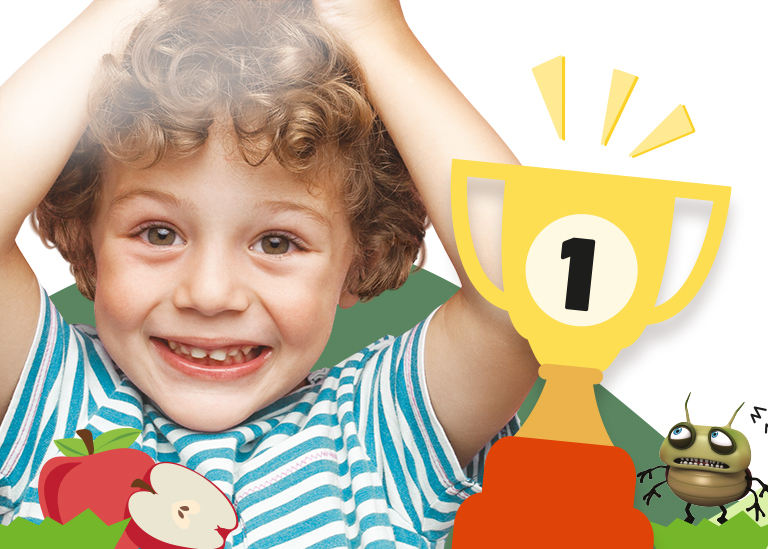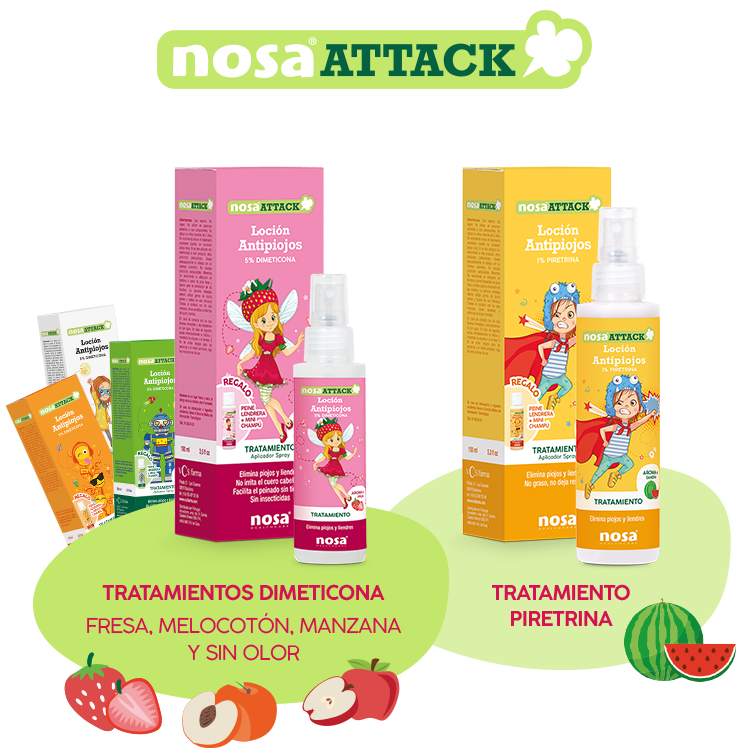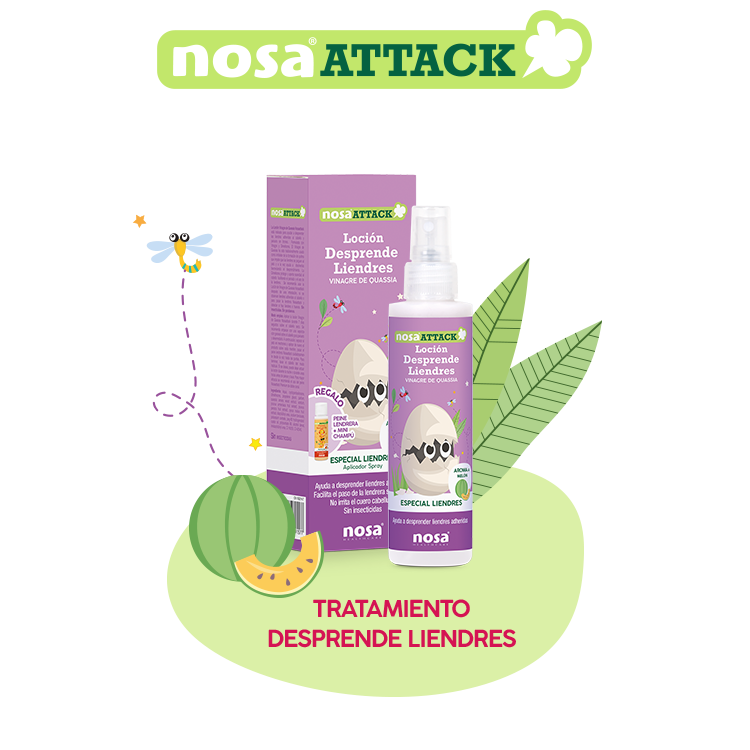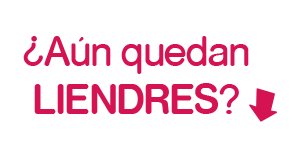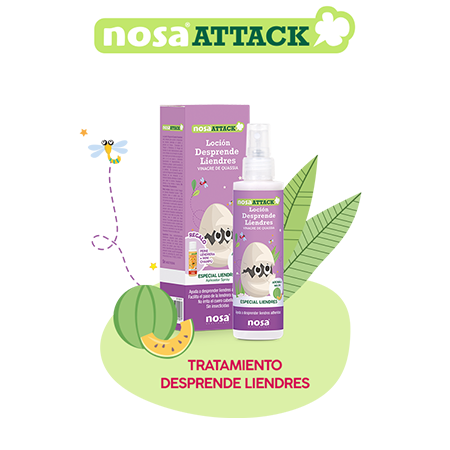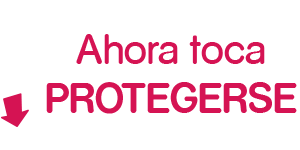WE TELL YOU ALL ABOUT IT
ON LICE AND NITS
WHAT ARE HEAD LICE?
Lice (Pediculus humanus capitis) are oviparous insects that live exclusively on human hair and feed on blood. They are visible to the naked eye, brown and between 2 - 3mm in size. Head lice infestation is known as pediculosis.
They cannot fly or jump (as some myths suggest). Their six legs allow them to cling to hair and move very quickly, so they are difficult to spot and their nits are easier to distinguish, as they do not move.
WHAT ABOUT NITS?
Nits are the small whitish eggs that are attached to the base of the hair and within a week or so hatch into lice.
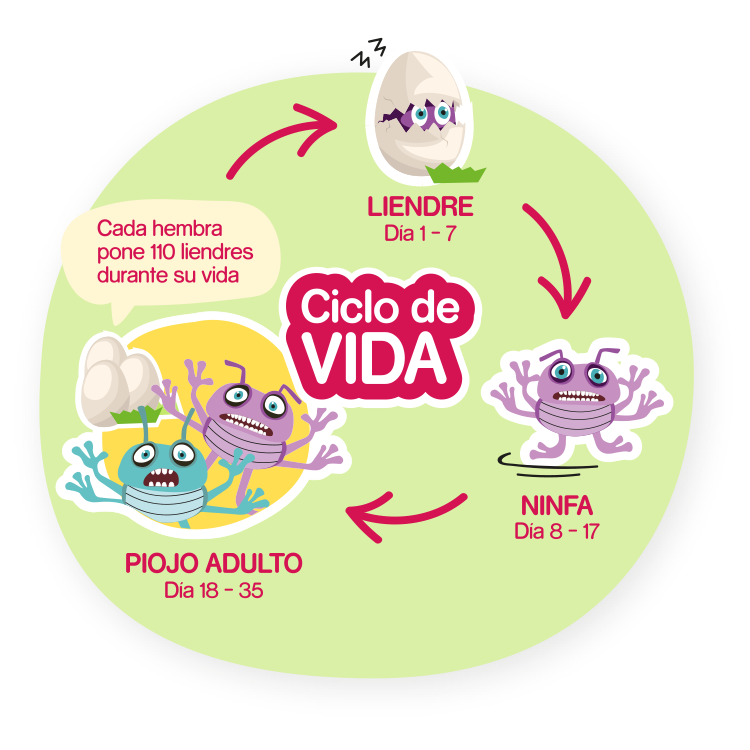
Did you know that lice cannot survive for more than 24 hours outside the head of a human being? Lice are parasites and need the food and temperature of their host to live, i.e. our heads.
They live for about a month, we tell you about their 3 stages:
Nit: Between 6-7 days. It is the egg of the louse, attaches to the base of the hair and a 60% reach adult lice.
Nymph: Between 9-10 days. The newly hatched louse is invisible to the human eye and moults 3 times its growing body until it becomes an adult louse and can reproduce.
Adult louse: 15-16 days. Females lay 4 to 8 eggs per day at a distance of 1 - 2 mm from the scalp.
To ensure that the nits adhere to the hair, they secrete a sticky, water-insoluble substance that acts as a fixative.
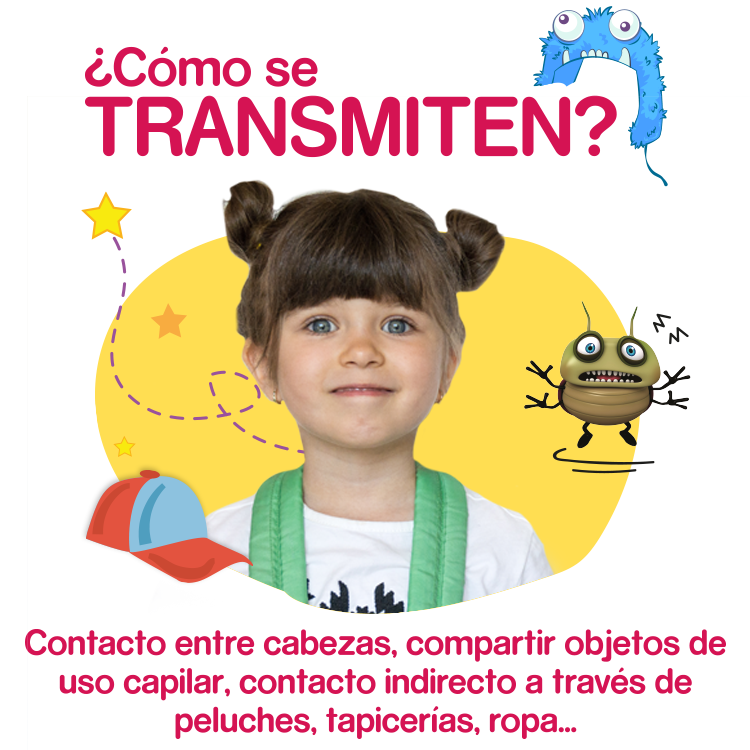
WAYS OF SPREADING HEAD LICE
Have you heard that head lice jump from head to head? This is a myth. Head lice are only spread by contact as they cannot fly or jump. Their fast movements allow them to travel from head to head or through objects that are in contact with the head. Do head lice have a preference for dirty heads? False... they prefer clean hair as it gives them a better grip and makes it easier for them to reach the scalp.
Why are children more prone to head lice? Head lice can be transmitted at any age, but young children, due to their habits, are most at risk of contracting them.
It is therefore important to know the means of transmission they use in order to avoid contagion.
- Head-to-head contact
- Contact with everyday objects close to the head, such as combs, hats, stuffed animals, upholstery....
And remember, pets CANNOT infect us.
SYMPTOMS AND REVIEW
OF LICE AND NITS
The main symptom that your child has lice is itching. When the louse bites to feed, it secretes saliva, which is the cause of itching and in most people also the reddening of the area.
Normally, the more itchy the head, the greater the infestation. If the person has had a previous infestation, they are likely to have more discomfort as the area is sensitised.
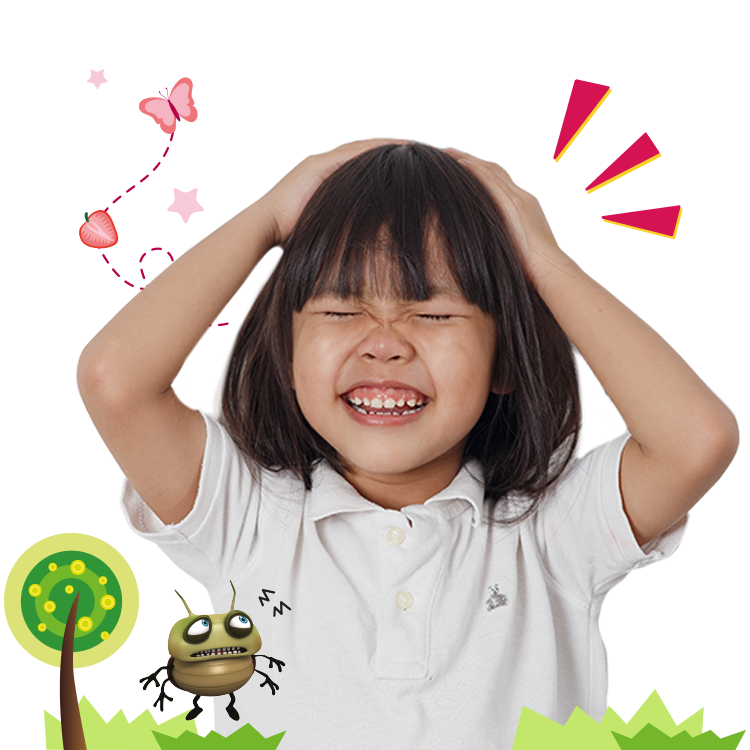
IF it needs pediculicidal treatment:
- Itching and visualisation of live lice
- No itching, but live lice are visible.
- Itching and visualisation of nits
NO pediculicidal treatment is required:
- No itching but nits are visible. They will be removed with a nit comb and with the help of Nosaattack nit lotion.
- Itching without visualising nits or live lice. We recommend consulting a doctor or dermatologist.
HOW TO CHECK THE HEAD IN DEPTH?

Thoroughly examine the hair strand by strand, with the help of a comb (narrow-toothed comb).
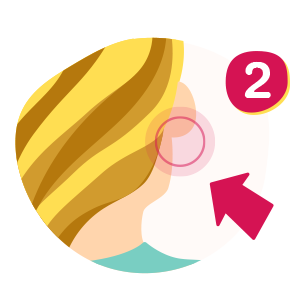
Pay special attention to the nape of the neck and behind the ears where the temperature is more constant and the hair is less prone to breakage.

Shake the comb in the sink or on a white surface to see if there are any lice. Clean the comb with water under the tap to wash away the lice.
HOW TO DISTINGUISH NITS FROM DANDRUFF?
Nits show resistance when trying to detach from the hair due to the sticky substance that keeps them attached, dandruff does not. Dandruff is removed by normal washing, nits remain. Nits separate from the scalp as the hair grows. The further away from the root they are, the more likely they are to have died or hatched. Therefore, the sight of nits does not mean that the infestation is still active.
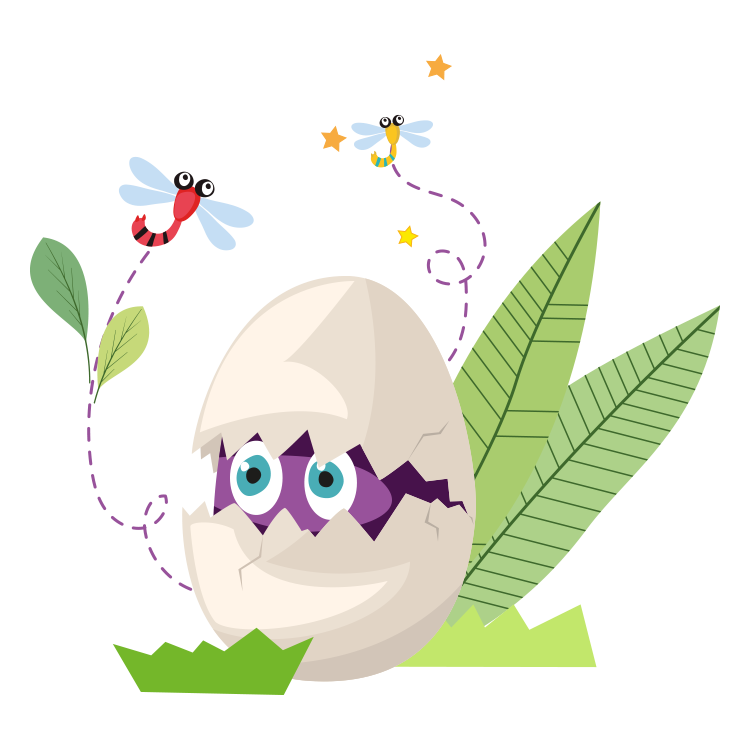

ANTI-LICE TREATMENTS
If your little one is already infested, win the battle against lice with Nosaattack treatments.
ANTI-LICE LOTION 5% DIMETHICONE
Its unique combination of silicones and high-density dimethicone envelops the louse, paralysing it and causing it to suffocate to death. Thanks to the softening properties of dimethicone, it facilitates the removal of lice and detangles the hair without tugging.
Insecticide-free, suitable for sensitive skin.
ANTI-LICE LOTION 1% PYRETHRIN
Formulated with D-phenothrin, a pediculicidal active ingredient that blocks the louse's central nervous system, ensuring its elimination.
Non-greasy. Leaves no residue.
Available in PACK lotion + shampoo format.

TREATMENTS
SHEDS NITS
Have you finished with the lice but still have nits? It's time to use the nit lotion.
NIT LOTION
Formulated with Quassia Vinegar which inhibits the formation of chitin that prevents nits from sticking to the hair and at the same time helps to dissolve them, favouring their detachment.
Dimethicone protects and softens the hair, making it easier to comb and comb out.
It is recommended for use after an infestation, if nits are observed attached to the hair or for combing with the Nosaattack nit comb to detect if nits or eggs are present.
Insecticide free. Paraben free.

LICE PREVENTION
You have won the battle! Now it's time to protect
and prevent further infestations with Nosaprotect.
Products formulated with Tea Tree oil (without Methyl Eugenol) to keep lice away.
TRIPLE ACTION TEA TREE SPRAY
Protects with Tea Tree, detangles with Dimethicone and contains Sunscreen.
Pediatric and dermatologically tested.
Paraben, Methyl Eugenol, Methylisothiazolinone (MIT) free
TEA TREE SHAMPOO
Cleanses, softens and protects hair.
Pediatric and dermatologically tested.
Paraben, Methyl Eugenol, Methylisothiazolinone (MIT) free
TEA TREE MASK
Protects against lice, detangles and repairs.
Dermatologically tested.
Free of sulphates, parabens and colourants.
TEA TREE STYLING WAX
Create the funniest looks as well as protect.
Leaves no residue. Free of sulphates, parabens and colourants.
WE TELL YOU ALL ABOUT IT
ON LICE AND NITS
WE TELL YOU ALL ABOUT IT
ON LICE AND NITS

